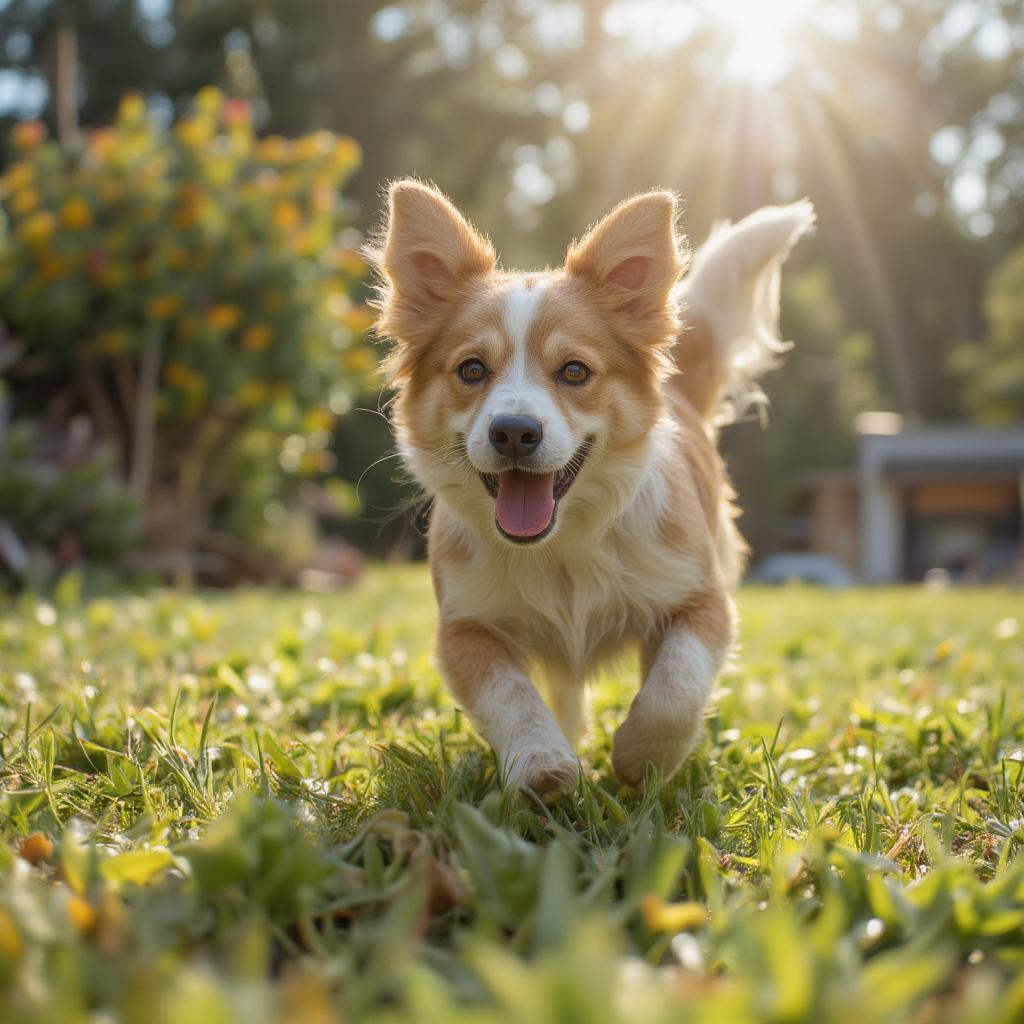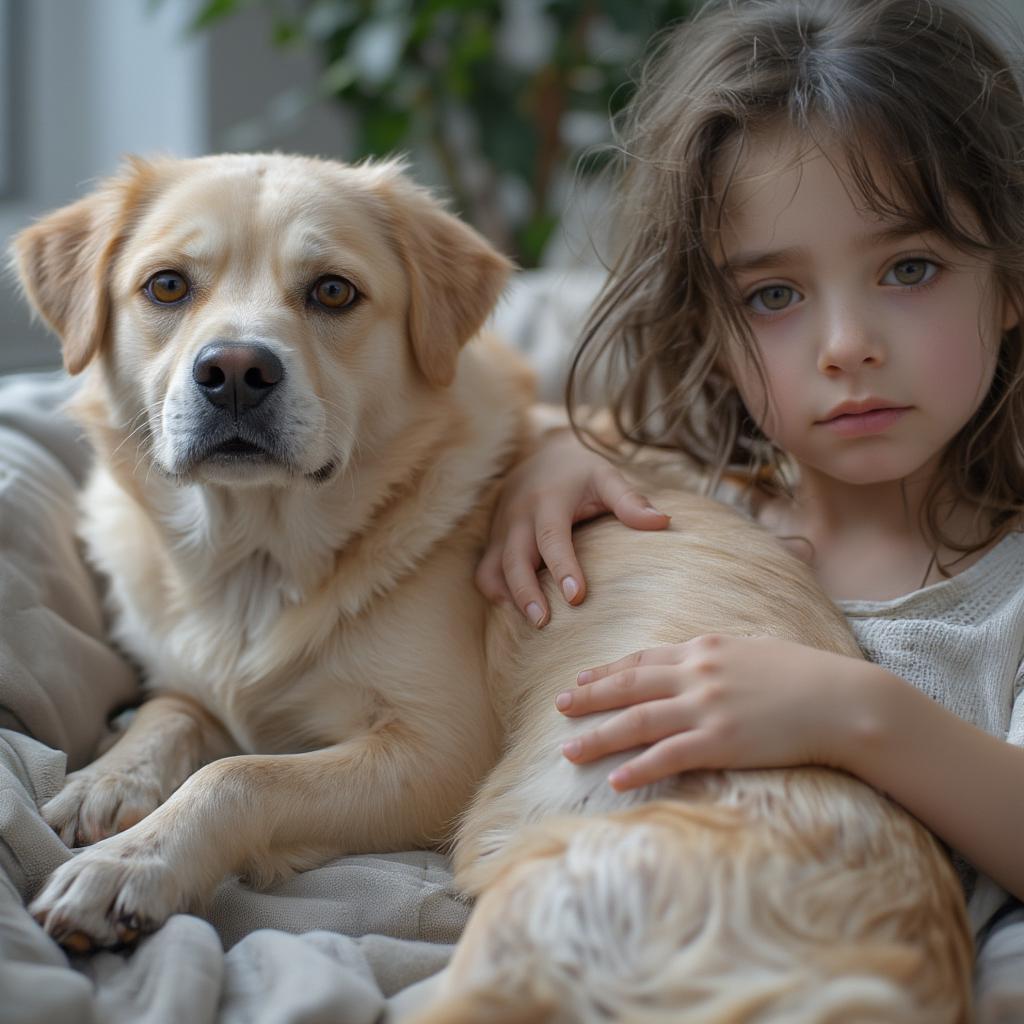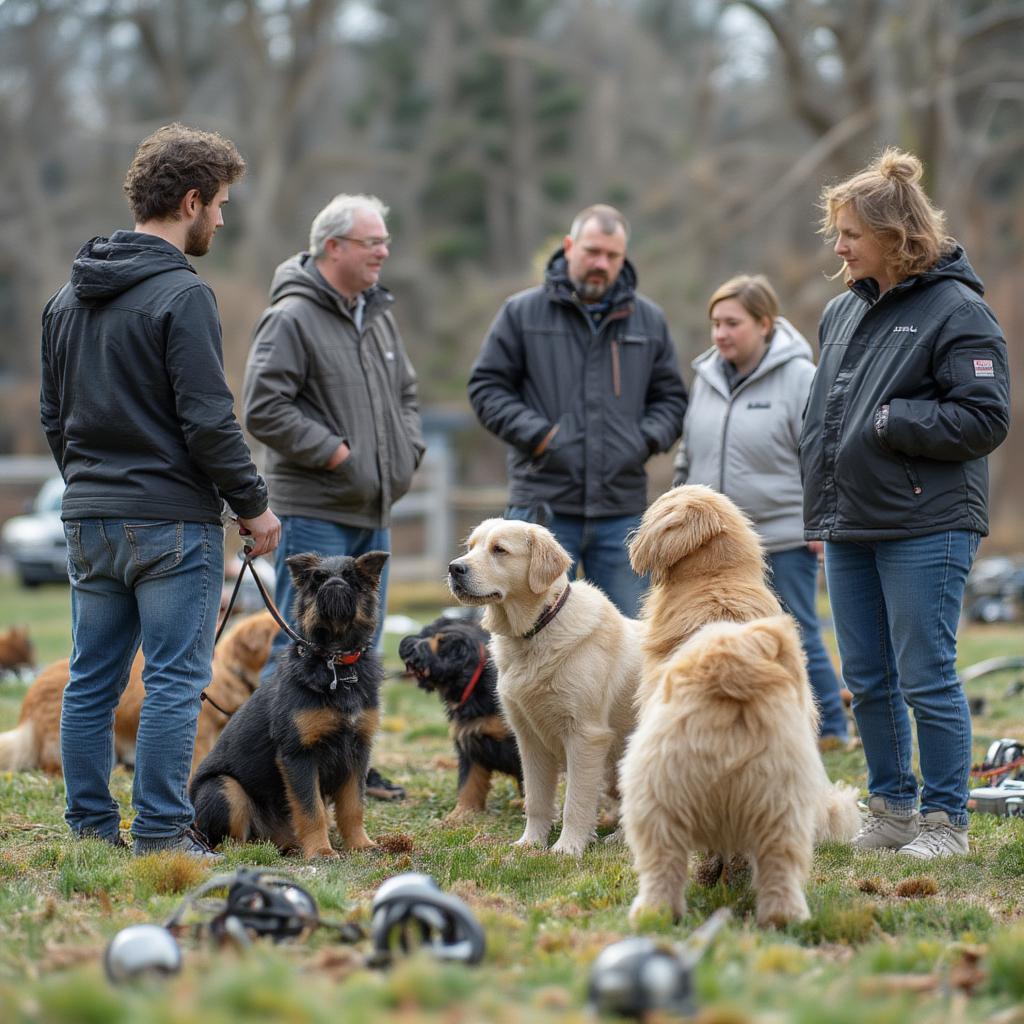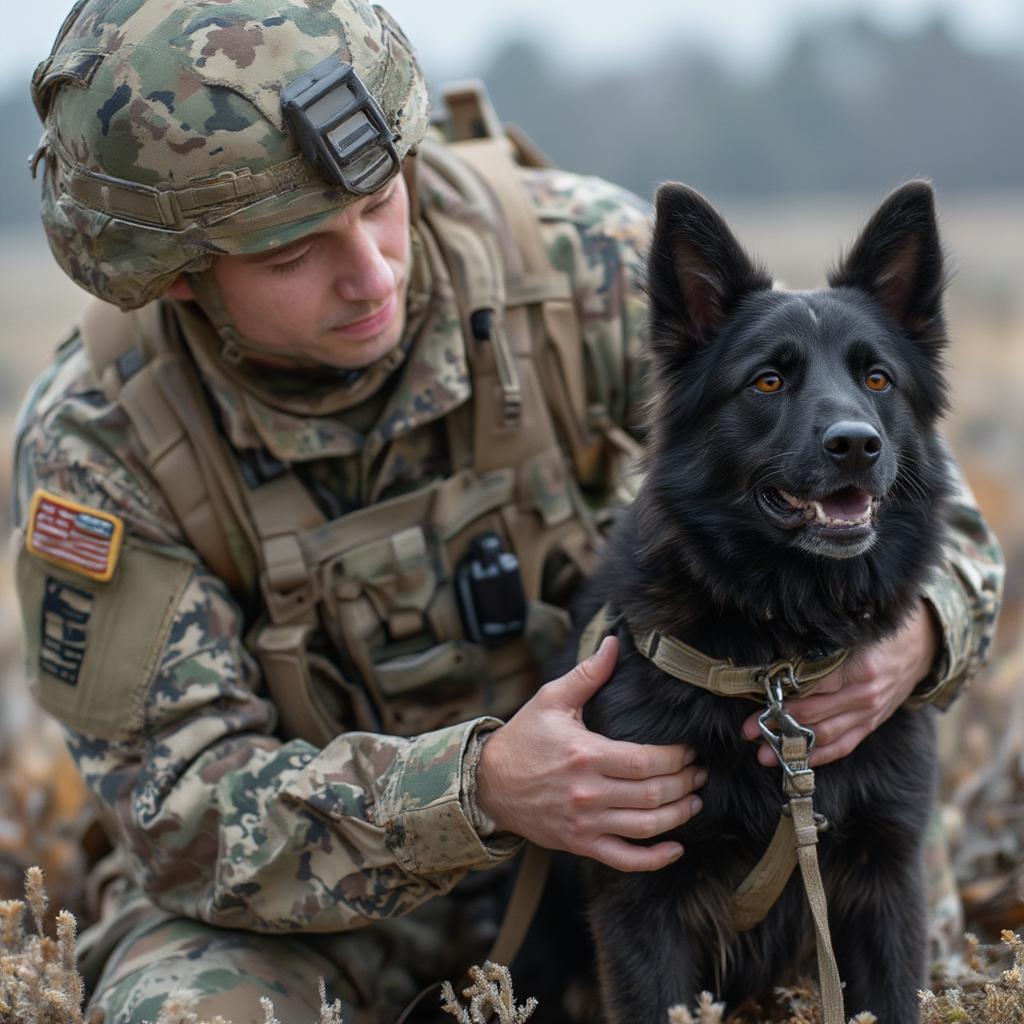Understanding the Thunder Dog: Why Some Dogs Fear Storms

Many dog owners are familiar with the sight of their beloved pet trembling, hiding, or exhibiting other signs of extreme anxiety during a thunderstorm. This phenomenon, often referred to as “Thunder Dog” behavior, is a common yet complex issue that deserves a deeper understanding. It’s more than just a dislike of loud noises; for some dogs, it’s a genuine phobia that can severely impact their quality of life.
Why Do Dogs Develop a Fear of Thunder?
The reasons behind a dog’s fear of thunder are varied and not always fully understood. However, several contributing factors can lead to this anxiety.
- Sound Sensitivity: Dogs have incredibly sensitive hearing, capable of detecting sounds at much higher frequencies than humans. The loud, booming noises of thunder can be overwhelming and frightening, especially if they’re coupled with sudden changes in air pressure.
- Negative Associations: If a dog experiences a traumatic event during a storm, such as being left alone or injured, they may develop a negative association with the sound of thunder. This can lead to a conditioned fear response.
- Genetics: Some breeds may be predisposed to anxiety disorders, making them more likely to develop a fear of thunder.
- Lack of Early Socialization: Dogs that weren’t properly exposed to a variety of sounds and experiences during their critical socialization period (between 3 and 16 weeks of age) may be more prone to fearfulness later in life.
Understanding these underlying causes is crucial for developing effective strategies to help your thunder dog rescue. Recognizing if your pet’s anxiety is related to a specific trigger or a general sense of unease is the first step to providing them comfort.
Recognizing the Signs of Thunder Anxiety in Dogs
It’s important to learn to recognize the signs that your dog is experiencing anxiety during a storm. These signs can range from subtle to severe and can vary from one dog to another. Here are some common indicators:
- Panting and Pacing: Rapid breathing, restlessness, and an inability to settle down.
- Trembling and Shaking: Visible trembling, shaking, or shivering.
- Hiding: Seeking out hidden places such as under furniture, in closets, or behind you.
- Vocalization: Barking, whining, or howling excessively.
- Destructive Behavior: Chewing, digging, or scratching at furniture, doors, or windows.
- Clinginess: Becoming overly attached to their owner and following them around constantly.
- Loss of Appetite: Refusing to eat or drink.
- Inappropriate Elimination: Having accidents inside the house despite being house-trained.
These behaviors often indicate that your dog is experiencing more than just mild discomfort; they are in a state of distress. Being attentive to these signals allows you to intervene and help your pet feel safer during stressful times. It’s also important to keep in mind that some dogs may exhibit more subtle signs, so pay close attention to your pet’s behavior around storms and learn their specific responses.
How Can You Help Your Fearful Dog?
Helping a dog cope with storm phobia is a gradual process requiring patience and understanding. There isn’t a one-size-fits-all approach, and it may take a combination of techniques to find what works best for your furry friend. Here are some strategies to consider:
- Create a Safe Haven:
- Designate a quiet, comfortable space where your dog can retreat during a storm. This could be a crate, a room in the basement, or a cozy corner.
- Include familiar items such as their bed, toys, and a blanket that smells like you to provide a sense of security.
- Consider adding a white noise machine or playing calming music to help mask the sound of thunder.
- Stay Calm and Reassuring: Avoid reacting anxiously to the storm, as your dog may mirror your fear. Instead, maintain a calm and reassuring demeanor. Speak to your dog in a gentle tone and offer comfort without reinforcing their fear.
- Desensitization and Counter-conditioning:
- Gradually expose your dog to recordings of thunder at a very low volume, rewarding calm behavior with treats and praise.
- Slowly increase the volume of the recordings as your dog becomes more comfortable.
- This technique aims to change your dog’s association with thunder from fear to positive experiences.
- Distraction Techniques:
- Engage your dog in fun activities like playing fetch or giving them a puzzle toy to distract them during a storm.
- Provide them with a long-lasting chew toy to help redirect their focus.
- Pressure Wraps:
- Consider using a pressure wrap or a thunder shirt, which applies gentle pressure to the body to help reduce anxiety.
- Many pet owners report that these wraps can be beneficial for dogs experiencing storm phobia.
- Medication and Supplements:
- In severe cases, medication prescribed by a veterinarian may be necessary to help manage your dog’s anxiety.
- Some natural supplements, such as melatonin, may also help reduce anxiety, but it’s essential to consult your vet before using any medication or supplement.
Remember to never punish your dog for showing signs of fear; this will only worsen their anxiety. Be patient and consistent with your approach, and always prioritize your dog’s comfort and safety. Finding the right combination of techniques might take time, but seeing your furry friend feel more secure and at ease will be well worth the effort.

The Importance of Early Intervention for Thunder Anxiety
The earlier you address your dog’s storm phobia, the better the outcome is likely to be. If a dog’s fear of thunder is not addressed in its initial stages, it can worsen over time, making it more challenging to treat. Starting early with basic calming techniques and counter-conditioning can make a huge difference.
- Puppyhood and Socialization: Exposing puppies to a variety of sounds and environments during their socialization phase is essential. If your dog is young, try to introduce them to moderate sounds of thunder so they learn it’s nothing to be afraid of.
- Consult a Professional: If you’re struggling to manage your dog’s thunder anxiety, don’t hesitate to seek help from a veterinarian or a certified professional dog trainer. They can evaluate your dog’s individual needs and develop a tailored plan.
“Addressing a dog’s fear of thunder early is key to ensuring their well-being and happiness. The longer the anxiety persists, the harder it becomes to manage,” notes Dr. Emily Carter, a veterinary behaviorist. “A combination of environmental management, behavioral techniques, and potentially medication is sometimes necessary for severe cases.”
Common Misconceptions About Thunder Dogs
There are several common misconceptions about dogs that are afraid of thunder. Addressing these myths can help owners better understand their pets’ needs and avoid unintentional harm.
- “They’re Just Being Dramatic”: It’s important to understand that fear is a genuine emotion. A dog that exhibits intense anxiety during a storm is not acting out; they are truly distressed.
- “Ignoring It Will Make It Go Away”: Ignoring your dog’s fear will not make it disappear; it may only worsen it. Your dog needs reassurance, not dismissal, in these moments.
- “Punishment Will Teach Them Not to Be Scared”: Punishing your dog will only increase their anxiety and may damage your relationship. Positive reinforcement and patience are vital.
Many dogs suffer silently with their anxieties. Therefore it is vital to understand that a lost dog story could actually be a story about a fearful dog who escaped during a thunderstorm.
Thunder and Other Sensitivities in Dogs
It’s not uncommon for dogs that are afraid of thunder to also exhibit fear of other loud noises, such as fireworks or gunshots. Additionally, they may be sensitive to other sensory experiences, such as changes in barometric pressure, static electricity, or even the flashing lights associated with storms.
- General Noise Phobia: If your dog is scared of thunder, it’s important to be aware of and proactively manage their fear response in relation to other loud noises.
- Managing Multiple Sensitivities: Identify all triggers and ensure your dog has a safe environment during such times.
- Behavioral Training: Working with a professional trainer can help dogs manage these other sensitivities through desensitization and counter-conditioning.
Practical Tips for Stormy Weather
During actual storms, you can take several immediate steps to help your “thunder dog”:
- Close the curtains and windows: Minimize visual stimulation from the storm.
- Play white noise: Use a fan or white noise machine to mask the sounds.
- Stay indoors with your dog: Never force them to go outside during a storm.
- Distract with treats and toys: Keep them occupied and engaged.
- Create a safe space: Ensure their designated safe haven is comfortable.
- Be patient: Remember that your dog needs your understanding and support during these stressful moments.
“The best approach is to be proactive and patient. Understand your dog’s triggers and create a safe and calm environment when a storm is approaching,” advises Sarah Thompson, a certified dog behavior consultant. “The goal is to help your dog feel secure and less anxious.”
The Long-Term Effects of Untreated Thunder Phobia
If a dog’s fear of thunder goes unaddressed, it can escalate into more significant behavioral issues. Chronic anxiety can negatively affect their physical and mental health. It’s not just about the thunder; it’s about how they perceive the world around them.
- Increased General Anxiety: An unmanaged fear of thunder can lead to more general anxiety and a higher likelihood of developing other fears and phobias.
- Stress-related Health Problems: Chronic stress can lead to digestive problems, hair loss, and other health issues.
- Reduced Quality of Life: Your dog’s overall well-being and enjoyment of life can be significantly impacted if their fear of thunder is not properly addressed.

Conclusion: Building a Stronger Bond with Your Thunder Dog
Understanding the “thunder dog” phenomenon is the first step in helping your furry friend overcome their fears. It’s not just about reacting during storms; it’s about creating an environment of safety, consistency, and love every single day. Through patience, understanding, and a proactive approach, you can significantly improve your dog’s life and strengthen your bond. Remember, each dog is unique, and finding what works best may require trying different techniques. Your consistent love and support are key to helping your the story of your dog be less fearful of those loud rumbles.
FAQ: Addressing Your Questions About Thunder Dogs
Here are some frequently asked questions about “thunder dogs” to further assist you:
Q: Can dogs truly predict a thunderstorm before it arrives?
A: While dogs cannot predict the future, they are very sensitive to changes in barometric pressure and static electricity, which can occur before a storm. They might start showing anxiety before the thunder actually starts.
Q: How long does it usually take to help a dog overcome a fear of thunder?
A: It varies greatly depending on the dog, the severity of the fear, and consistency of training. It may take weeks or even months. Patience and persistence are key.
Q: Is it possible to fully cure a dog of their fear of thunder?
A: While a complete cure might not always be possible, you can greatly reduce a dog’s anxiety and improve its quality of life with proper management and training.
Q: What if my dog’s fear of thunder is so severe that nothing seems to work?
A: In these cases, it’s best to consult with a vet and/or a certified veterinary behaviorist. Medication, coupled with behavioral training, can help manage severe cases.
Q: Should I give my dog extra attention when they are scared?
A: While you want to be reassuring, it’s essential to avoid overly comforting or coddling them. This can inadvertently reinforce their anxious behavior. Instead, offer calm reassurance without reacting anxiously.
Q: Can puppies be afraid of thunder?
A: Yes, puppies can develop fears, including thunder, and it’s important to expose them to various noises calmly early in life to prevent future fears. If they do start to exhibit fear, address it early.
Q: What are some safe ways to help my dog cope during storms?
A: Create a safe haven, use distraction techniques, such as providing puzzles or treat-dispensing toys, and consider a pressure wrap. Playing white noise can also make a big difference. If you are home with your pet, you can maintain your own calm demeanor which often provides the most comfort.
Remember that you’re not alone in facing this challenge, and there are plenty of resources available to help you and your a cat and dog's friend rescue through it.




